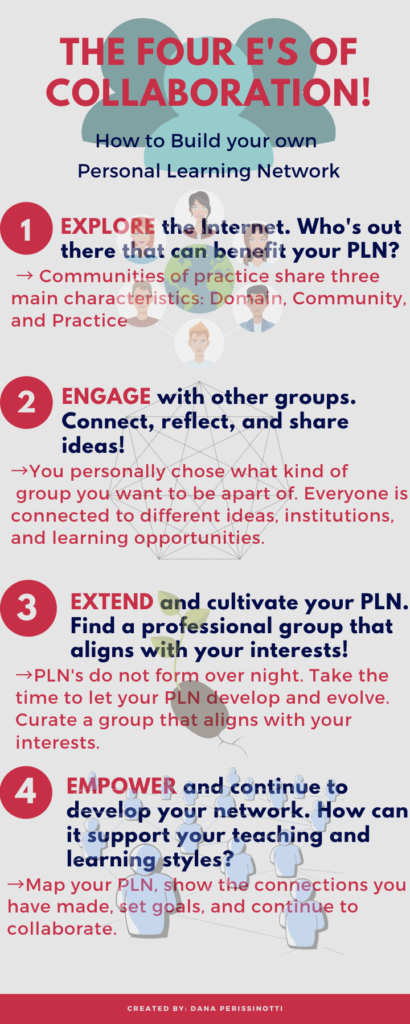Have you ever had a really good idea? Do you want to share and grow that idea to something even greater? EXPLORE! Take your idea and share it with a community of practice. BOOM. You have created a great idea with the help of people on the Internet! It’s all about collaboration.
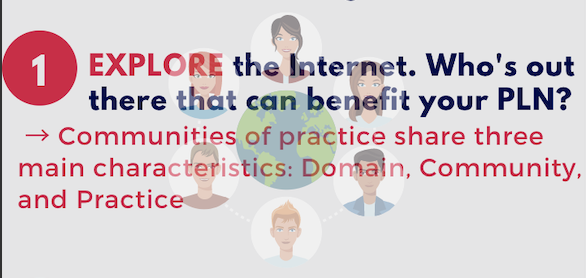
What is a community of practice you may ask? Well, a community of practice is a group of people with a shared passion and would like to learn more about it. Communities of practice regularly interact online, even though members may have no personal connection at all. They are tied together by a certain topic with like-minded ideas. Communities of practice have the same focus in terms of domain, community, and practice. Domain means that the group has a knowledge and skill set for a specifically focused area of interest. Community is the individuals that are a part of the group, converging and learning together on a platform such as Twitter, YouTube, or blogs. The group practices exchanging and sharing different ideas, tools, and resources.
Being a part of the community means you are contributing to something greater than just your own idea. You want to grow your learning and teaching styles through the collaboration of others. Like Steven Johnson says in his video Where Good Ideas Come From, we are in a time and place that makes collaboration super simple. With the power of the Internet, collaboration even on a global scale is not hard. Different platforms allow for educators to come together to share ideas, outlooks, and resources with the click of a button.
ENGAGE using your Personal Learning Network (PLN). A PLN is your own personal way to learn from other’s ideas/connections/reflections. This learning can be done of platforms both formal (like a TED Talk) or informal (such as Twitter or YouTube). Whatever the case, everyone is connected to different ideas, institutions, and learning styles. This helps to enrich the learning process and provide you with the most relevant information. It’s all about collaboration.
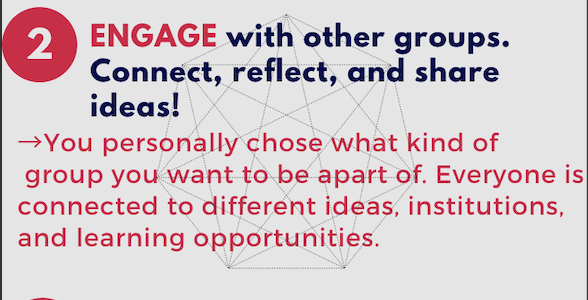
You are able to personally chose what kind of group you would like to be in. It is all about choice and what you are looking to gain from the experience. Your learning could be focused on a certain topic, or maybe you are just open to listening to other’s ideas. Whatever the case, there are many different platforms to choose from. Dr. George Siemens talks about in his video Overview of Connectivism how he started blogging in the late 1990’s. From there, he would read other blogs, share ideas, and connect with others. Now in 2020, there are all kinds of networks for teacher to collaborate on. My personal favourite platform for collaboration is Twitter, due to the convenience of hashtags, abundance of users, and of course the use of GIFs. Networking has never been easier or more fun. Like Vygotsky’s theory states, learning is both a social and collaborative activity.
Cultivate your PLN by EXTENDING. Your PLN is not going to develop overnight, odds are you will not find a group you fit in well with your first try. It takes time to comb through and find a group that aligns with your interests and theories.
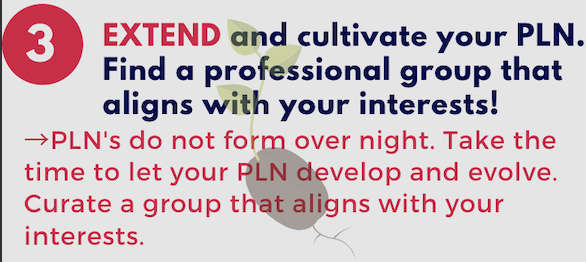
PLNs are meant to promote growth, development, and understanding. Find a group that does this for you. Strengthen your connections in communities of practice by commenting, sharing, and advising others. Intake information and output your own work to gather feedback. Search. Annotate. Browse. Find what is out there that best benefits your needs. You are not tied to the first group you join, keep extending your online growth.
EMPOWER your PLN by continually growing and learning. Use your gained knowledge for both personal and professional growth.
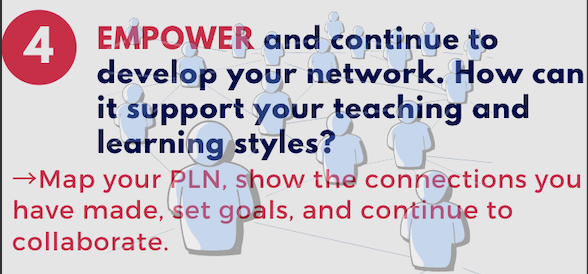
Use digital technologies to build and develop communities of practice. Adapt and elevate both your teaching and learning styles through these communities. Track your growth by mapping out your PLN. Create a diagram that helps you to visually see the people, content, and organizations you have come across. Use your connections to help you set goals, solve problems, and continue to collaborate.
